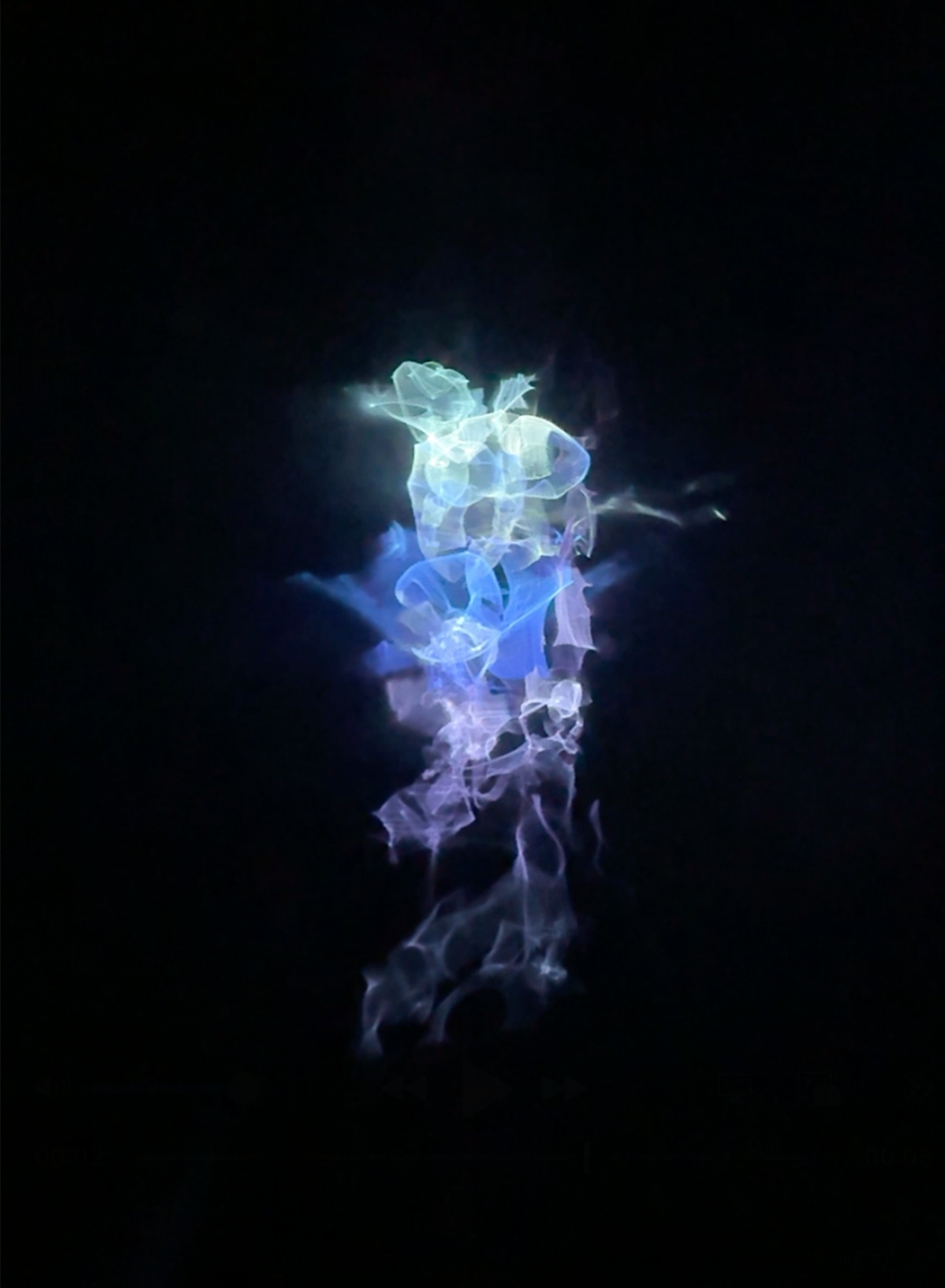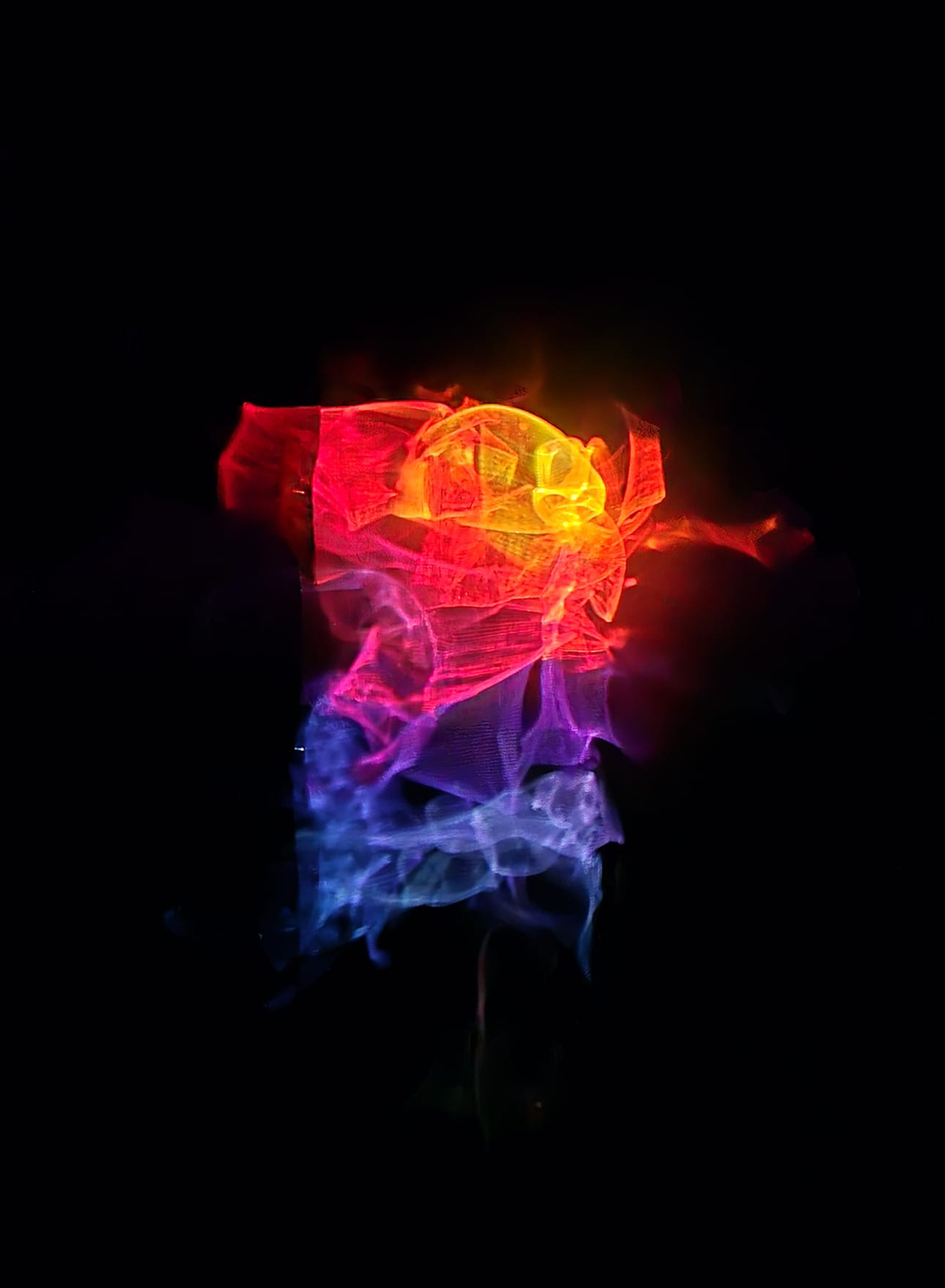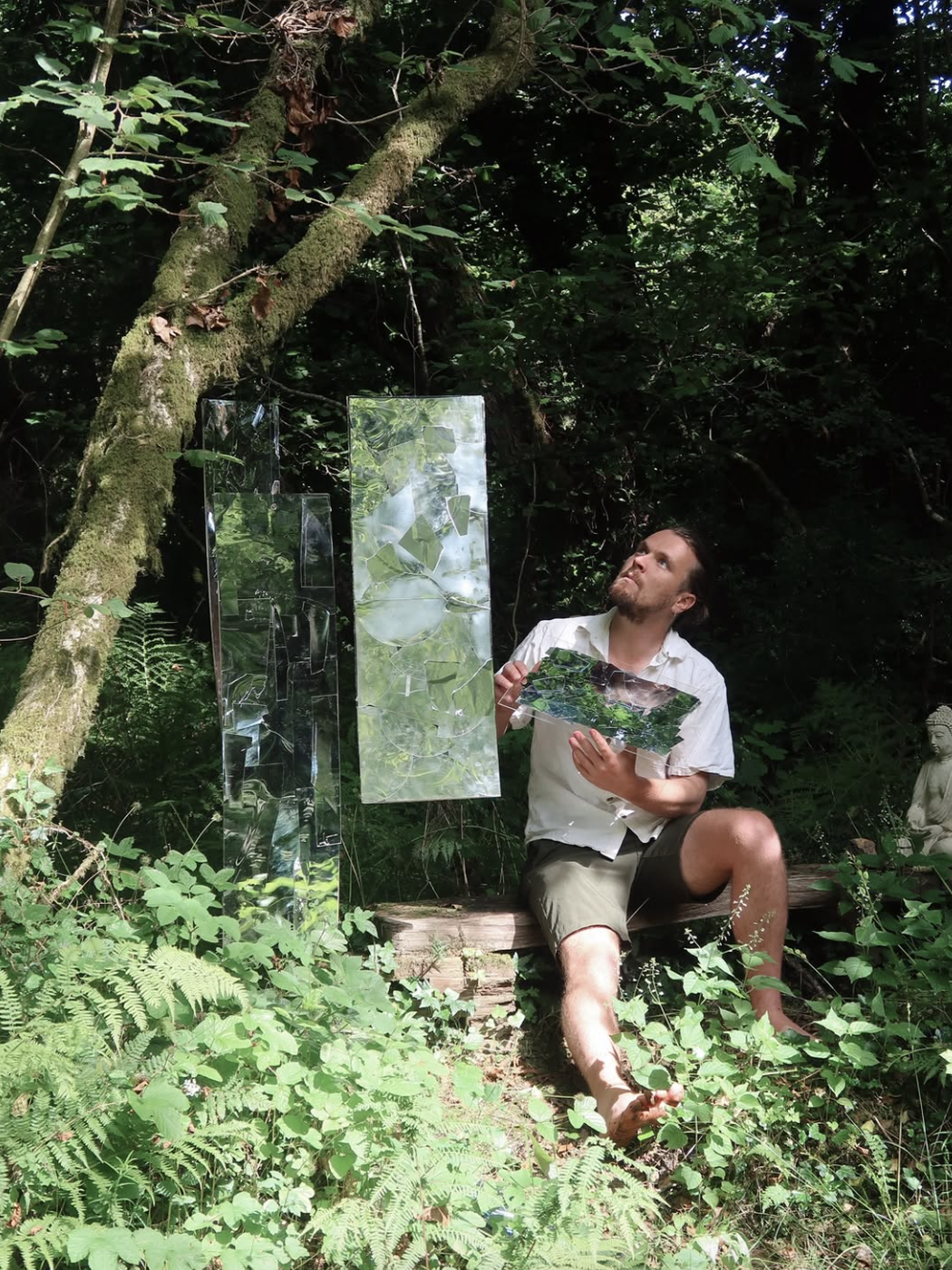Mitchell Fawcett
What initially drew you to working with light as a primary medium in your installations?
For me, it always comes back to the fact that light is life — everything comes from light. It’s the core of how we experience the world, and it has a direct connection to how we feel, moment by moment. When I started working with light, I realised it wasn’t just about visual impact — it was about energy, mood, and emotion. I’m really interested in how light can create spaces where people can slow down, feel calmer, and experience a sense of peace. A big part of my work is about exploring how we can use light as a tool to support wellbeing, to help ease anxiety, and to offer people more positive, restorative experiences in public spaces. Light is such a powerful communicator, and I want my installations to be more than just visual — I want them to help people feel better, even if it’s just for a moment
How did your interest in phenomenology and sacred geometry begin, and how do they influence your creative process?
My interest in phenomenology started when I became more aware of how spaces make me feel — how environments shape not just thoughts, but mood, energy, and presence. I was fascinated by how certain spaces, or even small sensory details, could completely alter someone’s internal experience. That led me to explore phenomenology as a way of thinking about art: not just what something looks like, but how it’s felt, how it lives in the body, and how people move through it.
Sacred geometry came naturally alongside this, because it connects us to natural patterns, symmetry, and flow. I’m drawn to the way these shapes carry a kind of universal language — whether people understand the mathematics or not, they feel the harmony. In my creative process, I use sacred geometry as a foundation for form, and phenomenology as a guide for experience. Together, they help me create work that’s more than just visual — it’s something people physically and emotionally engage with

Can you describe the conceptual development behind The Journey of Light? How did the idea evolve?
The Journey of Light began as a personal reflection on how light affects us — not just in a physical sense, but emotionally and spiritually. I was thinking about how light guides people, how it can calm or energise us, and how it’s something we all instinctively respond to. The initial concept started with simple light interactions, but as I developed it, I wanted to go deeper — to create something that felt like a journey, something people could step into and experience as a kind of personal ritual or pause.
The evolution came through experimenting with movement and pacing — how the light could shift slowly, how it could mirror breath patterns or respond to presence. I also layered in ideas from sacred geometry and natural forms, so the structure itself would feel harmonious and grounding. The final piece became not just a visual installation but a sensory environment — a journey where people could reset, slow down, and experience a moment of calm within their day.
Your installations create deeply immersive experiences. How do you approach designing an environment that evokes emotion and contemplation?
When I design an installation, I’m thinking about how to create a space that feels alive — a space where people can slow down, feel more connected to themselves, and experience something beyond the everyday. A big part of that comes from working with light, but also with mirrored structures and reflections. I’m really drawn to how mirrored forms can manipulate gravity, perception, and orientation — how the alignment of shapes and reflective surfaces can reveal moments of light that aren’t always predictable.
In Journey of Light, for example, the experience shifts depending on where you stand. The forms only appear when the mirrors, angles, and light are perfectly aligned, and that creates a sense of discovery and wonder. There’s something mystical about it — about giving up control of what people will experience. I don’t want to tell people what to feel; I want the environment to guide them, to reflect back something unique to their presence and perspective. For me, it’s about designing spaces where people can experience calm, contemplation, or curiosity in a way that feels personal and instinctive

You’ve mentioned integrating AI and biometric sensing into your work. What possibilities do you see in merging technology with art for emotional or healing impact?
I’m really interested in how technology can help make art more personal and restorative. My vision with AI and biometric sensing isn’t about adding complexity, but about creating environments that actively respond to the individual. By integrating sensors — like heart rate monitors or simple biometric scans — the installation can pick up on someone’s emotional or physical state in that moment. The light and sound they experience would shift depending on their own body’s signals, offering exactly the type of environment they might need to feel calmer or more balanced.
I love the idea that the installation becomes a kind of intuitive space — almost like a mirror that senses you and gives back something nurturing. With AI, there’s also the possibility to evolve those responses over time, so it’s not a fixed loop but a living, adaptive environment. For me, this is where technology in art becomes really meaningful — it’s about creating spaces that help people reconnect with themselves, feel soothed, and leave with a little less anxiety than when they arrived
How do sound and meditative frequencies play a role in shaping the viewer’s experience?
Sound is just as important to me as light when it comes to shaping an atmosphere. Certain frequencies have a direct effect on our nervous system — slowing heart rate, reducing anxiety, and creating a sense of calm or groundedness. I’m particularly interested in using meditative frequencies, like 432 Hz or 528 Hz, because they seem to have this ability to bring people into a more relaxed, introspective state without them even realising it.
In my installations, sound works as an invisible layer that guides the pace of the experience. It creates rhythm, breathes life into the space, and helps people drop into a quieter mindset. Combined with gentle light shifts and organic forms, these frequencies can help people feel safe enough to let go, reflect, and have a more restorative experience. Ultimately, I want my installations to be places where both the visual and the soundscape work together to offer calm, clarity, or even subtle healing

Are there particular moments or reactions from viewers that have stayed with you?
Definitely — I think the moments that stay with me most are when people tell me they feel calmer or more present after being in the installation. There’s been times where people have stood in front of the work much longer than I expected, just slowing down, watching the light, taking it in. Some people have said it felt like the first time they’d properly paused all day.
One moment that really stuck with me was during Journey of Light, when someone said it felt like the installation was breathing with them — that it gave them a sense of calm they hadn’t realised they needed. It reminded me why I do this, why these sensory environments matter. For me, it’s those quiet moments of connection where people experience something restorative or unexpected that feel the most meaningful.


Leave a Reply